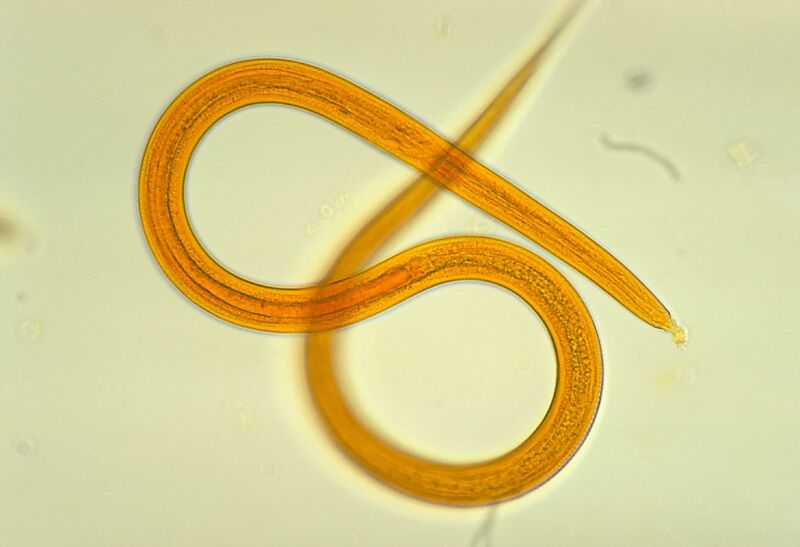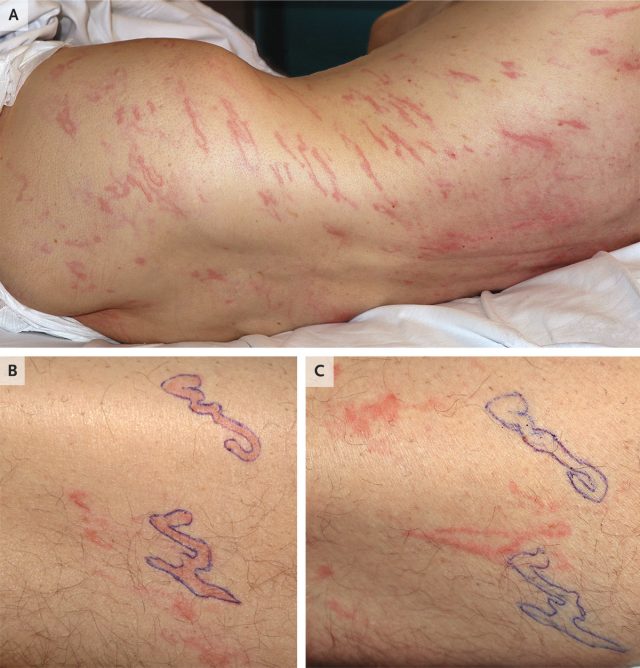Intro: It's your fault for clicking — 144 Comments
Army of worm larvae hatch from man’s bum, visibly slither under his skin
Doctors watched the shifting rash blanket his body in rare hyperinfection.

Beth Mole Beth is Ars Technica’s health reporter. She’s interested in biomedical research, infectious disease, health policy and law, and has a Ph.D. in microbiology.
"Doctors in Spain diagnosed a man with an unusual roundworm infection after watching an army of larvae writhe and slither under his skin, blanketing his whole body in an ever-shifting rash.
Doctors reported the man's rare hyperinfection this week in the New England Journal of Medicine, highlighting the unusual sight of a wriggling, sliding skin rash that tracked the movements of individual parasitic prowlers. The official diagnosis was larva currens from Strongyloides.
The unfortunate patient appeared to have a perfect storm of risk factors to develop the uncommon and unpleasant infection. The 64-year-old worked in sewage management and had previously been diagnosed with metastatic lung cancer. For three years prior, doctors had noted bouts where he had eosinophilia—unusually high levels of disease-fighting white blood cells—which can be an indicator of a parasitic infection. . .
Vermin invasion

The worm in this case is Strongyloides stercoralis, a nematode or roundworm known to infect people. Infections begin when a person is exposed to contaminated soil or sewage. The worms can mature and breed there, and legions of little larvae—about 600 micrometers in length—can emerge, burrow directly into a person's skin unnoticed, and make their way into the intestines by various routes. In some instances, the larvae make their way to the lungs, get coughed up, and then swallowed to reach their final destination. Once in the intestines, the worms embed themselves in the mucosa of the small intestines and reproduce. Larvae that hatch there are then shed in feces to start the process again—or penetrate the skin in the perianal area, resulting in an "auto-infection."
This latter, most disturbing cycle is what appears to have occurred in the cancer patient. Doctors noted that the problems began with a raised, itchy rash and mild diarrhea. The red, wavy skin lesions originated in his perianal region, then began to migrate under his skin, reaching all over his trunk and limbs. Doctors outlined individual red squiggles on his skin with pen and noted that 24 hours later, the squiggles had moved. . ."


No comments:
Post a Comment